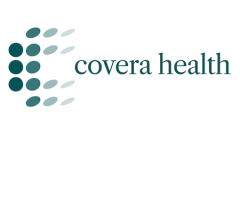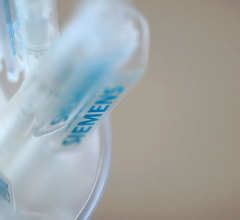
On March 27, the House of Representatives approved a historic $2 trillion stimulus package and sent it to President Trump for his signature, who then signed it into law. The package includes $100 billion to provide monetary assistance to the nation's struggling hospitals coping with the novel coronavirus (COVID-19) pandemic. The legislation will also deliver checks to individuals, expand unemployment benefits and provide money for states and businesses crippled by this pandemic.
The legislation, passed in response to the COVID-19 public health emergency (PHE) and the Coronavirus Aid, Relief, and Economic Security (CARES) Act, is the largest emergency aid package in U.S. history, and gives a massive financial injection into a struggling economy with provisions aimed at helping American workers, small businesses and industries struggling with the economic disruption. Key elements of the package include sending checks directly to individuals and families, a major expansion of unemployment benefits, money for hard-hit hospitals and healthcare providers, financial assistance for small businesses and $500 billion in loans for distressed companies.
Support for the CARES Act
According to Healthcare Dive, The American Hospital Association said it supports the bill as it will help providers on the front lines respond to COVID-19. The bill creates an emergency fund for hospitals and it also includes a 20 percent increase in Medicare reimbursement for hospitals that care for COVID-19 patients. The bill also earmarks $1.3 billion for 1,400 community health centers across the country and $16 billion for the national stockpile of emergency medical supplies.
“America’s hospitals and health systems appreciate the leadership of Majority Leader McConnell and Democratic Leader Schumer in recognizing the absolutely critical role of hospitals and health systems, and our dedicated front line caregivers, in responding to the COVID-19 pandemic. This bill includes important provisions that will help us respond, including the creation of an emergency fund grant program, additional support for taking care of COVID-19 patients and relief from spending cuts, among other provisions. This support will help those hospitals from rural and urban communities that are in dire financial need due to this devastating pandemic. The AHA supports this legislation and urges the Senate and House to act quickly to pass it,” said Rick Pollack, president and CEO of the American Hospital Association in a March 25 statement.
“While this legislation is an important first step forward, more will need to be done to deal with the unprecedented challenge of this virus,” Pollack continued. “We will continue to work with Congress to make sure providers on the front lines – hospitals, physicians and nurses – remain prioritized for future federal assistance as the COVID-19 pandemic spreads."
Relaxing Restrictions on Telehealth
The legislation also addresses telehealth, easing some of the barriers it has faced in the past. The Connected Health Initiative released a statement from executive director Morgan Reed regarding the congressional passage of the latest CARES Act.
“The CARES Act passed by the Senate today opens the door for healthcare providers to leverage telehealth and remote patient monitoring technologies to flatten the curve of the COVID-19 pandemic. CHI has led the charge to remove barriers and expand access to these technologies to combat the spread of COVID-19 with our partners including the American Medical Association, Apple, Boston Children’s Hospital, George Washington University Hospital, Microsoft, Podimetrics, Rimidi, Roche, and United Health Group, among others,” stated Reed.
“Telehealth and remote patient monitoring are already proving to be critical tools in the fight against COVID-19, but the new provisions in the Senate CARES Act will ensure even America’s most medically and economically vulnerable can benefit,” Reed continued. “Medicare and Medicaid patients struggle to get access to care, and locking them out of opportunities for telehealth during this crisis would be devastating.”
This is the third piece of major legislation Congress has considered related to COVID-19, following an $8.3 billion funding bill earlier this month and a bill signed into law last week that addressed preparedness and response. Leaders in Congress are currently discussing a fourth bill, as the pandemic continues to spread.
You can read the full CARES Act at https://bit.ly/2UpB2NV.
Related Coronavirus Content:
VIDEO: Use of Telemedicine in Medical Imaging During COVID-19
VIDEO: How China Leveraged Health IT to Combat COVID-19
CDRH Issues Letter to Industry on COVID-19
Qure.ai Launches Solutions to Help Tackle COVID19
ASRT Deploys COVID-19 Resources for Educational Programs
Study Looks at CT Findings of COVID-19 Through Recovery
VIDEO: Imaging COVID-19 With Point-of-Care Ultrasound (POCUS)
The Cardiac Implications of Novel Coronavirus
CT Provides Best Diagnosis for Novel Coronavirus (COVID-19)
Radiology Lessons for Coronavirus From the SARS and MERS Epidemics
Deployment of Health IT in China’s Fight Against the COVID-19 Epidemic
Emerging Technologies Proving Value in Chinese Coronavirus Fight
Radiologists Describe Coronavirus CT Imaging Features
Coronavirus Update from the FDA
CT Imaging of the 2019 Novel Coronavirus (2019-nCoV) Pneumonia
CT Imaging Features of 2019 Novel Coronavirus (2019-nCoV)
Chest CT Findings of Patients Infected With Novel Coronavirus 2019-nCoV Pneumonia


 January 06, 2026
January 06, 2026 









